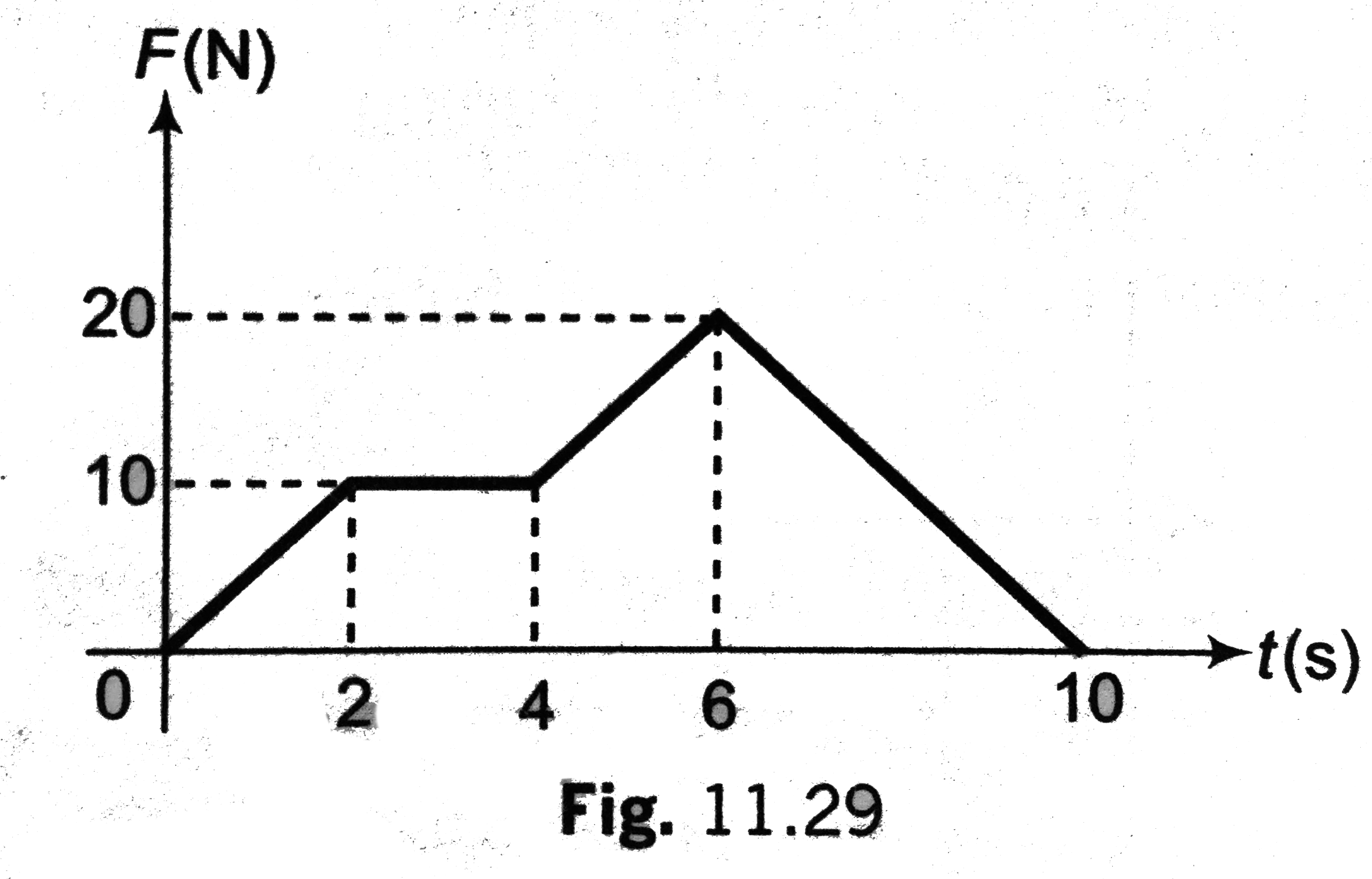A gravitational force of 4.002×10−7 N is acting between mahendra (75kg) and virat (80kg). Assuming that the bench on which mahendra is sitting is frictionless, starting with zero velocity , what will be mahendra's velocity of motion towards virat after 1s? Will this velocity change with time and how ?
Given : Force on mahendra (F) =4.002×10−7N
Mahendra's mass (m) = 75kg
To find : Velocity (v)
Formula : (i) F=ma
(ii) v=u+at
Calculation : from formula (i) ,
a=Fm=4.002×10−775=5.34×10−9m/s2
As mahendra is sitting on the bench, his initial velocity is zero (u=0) Assuming the bench to be frictionless , from formula (ii)
v=0+5.34×10−9×1
∴v=5.34×10−9m/s
As mahendra is moving towards virat, the distance between them decreases causing an increase in gravitational force.
For a given mass , gravitational force being directly , acceleration increases.
a=Fm
As acceleration increases, the velocity increases.
Topper's Solved these Questions
- GRAVITATIONBOOK - TARGET PUBLICATIONCHAPTER - GRAVITATIONEXERCISE - CHOOSE THE CORRECT ALTERNATIVE
12 Videos
- GRAVITATIONBOOK - TARGET PUBLICATIONCHAPTER - GRAVITATIONEXERCISE - COMPLETE THE PARAGRAPH
1 Videos
- ENVIRONMENTAL MANAGEMENT BOOK - TARGET PUBLICATIONCHAPTER - ENVIRONMENTAL MANAGEMENT EXERCISE - APPLY OUR KNOWLEDGE
28 Videos
- HEATBOOK - TARGET PUBLICATIONCHAPTER - HEATEXERCISE - Values to remember
10 Videos
Similar Questions
In the above example, assuming that the bench on which Mahendra is sitting is frictionless, starting with zero velocity, what will be Mahendra's velocity of motion towards Virat after 1 s? Will this velocity change with time and how?
View SolutionStarting from rest, what will be Mahendra's velocity after one second if he is falling down due to the gravitational force of the earth?
View Solution
Knowledge Check
A force 100 N acts on a body of mass 2 kg for 10 s. The change in velocity of the body is
A100ms−1B250ms−1C500ms−1D1000ms−1A particle of mass 2kg is initially at rest. A force starts acting on it in one direction whose magnitude changes with time. The force time graph is shown in figure. Find the velocity of the particle at the end of 10s.
 A10B30C40D50
A10B30C40D50Two bodies of masses 2kg and 4 kg are moving with velocities 20 m/s and 10m/s towards each other due to mutual gravitational attraction . What is the velocity of their centre of mass ?
A5.3ms−1B6.4ms−1CZeroD8.1ms−1
The gravitational force of 733 N acts on mahendra who was mass of 75kg. Starting from rest , what will be mahendra's velocity after one second if he is falling down due to the gravitational force of the earth ?
View SolutionHow long will mahendra take to move 1cm towards virat , if a cosntant acceleration of 5.34×10−9m/s2 is produced in mahendra ?
View SolutionA force of 4N acts on a body of mass 2kg for 4s. Assuming the body to be initially at rest, find (a) its velocity when the force stops acting (b) the distance covered in 10s after the force starts acting.
View Solution2 bodies of different masses of 2 kg and 4 kg are moving with velocities 20m/s and 10 m//s towards each other due to mutual gravitational attraction. What is the velocity of their centre of mass?
View SolutionA 10 kg object collides with a stationary 5 kg object and after collision, they stick together and move forward with velocity 4ms−1. What is the velocity with which the 10 kg object hits the second one ?
View Solution
